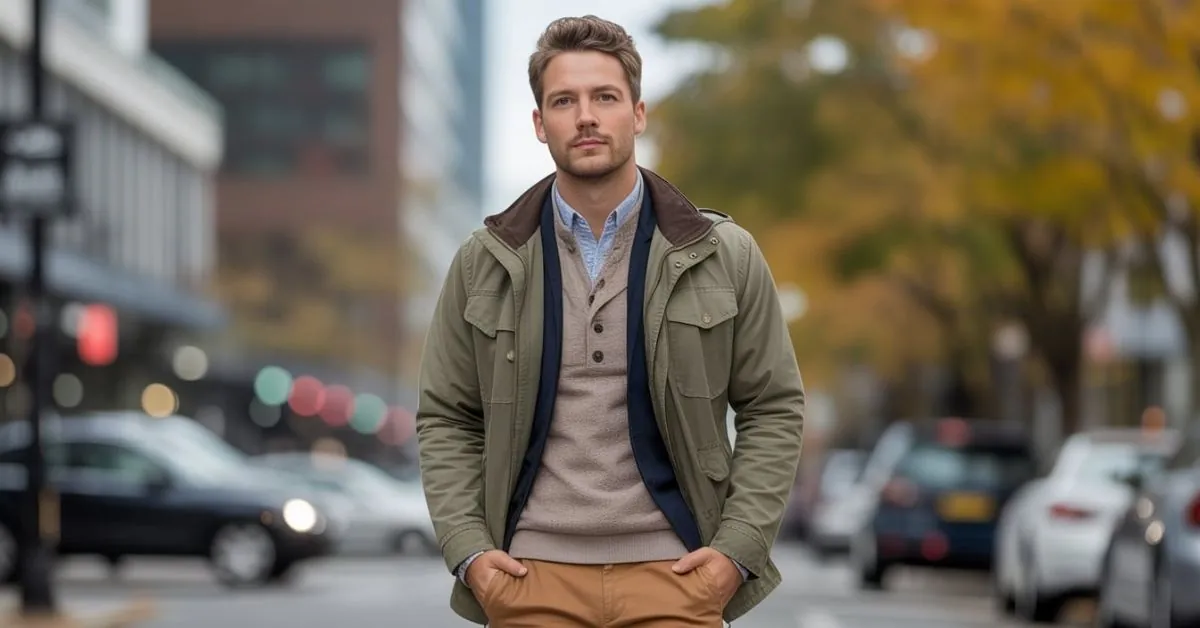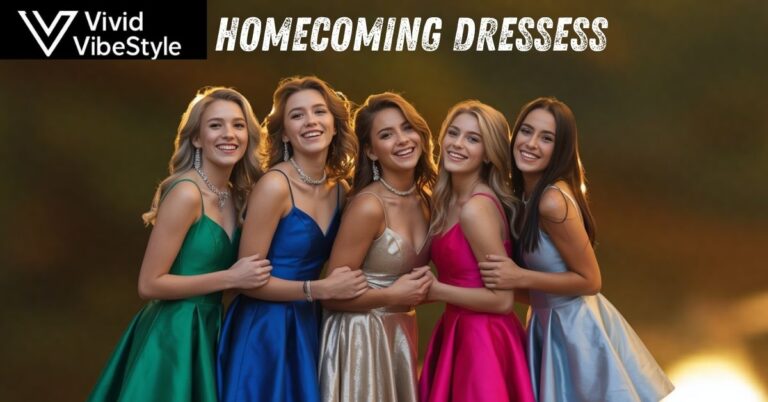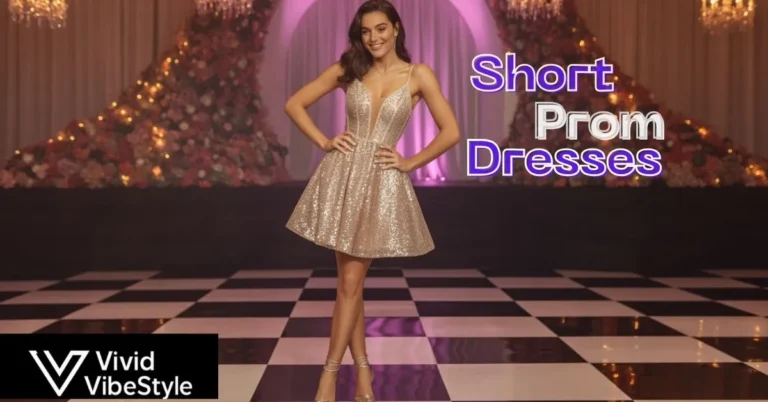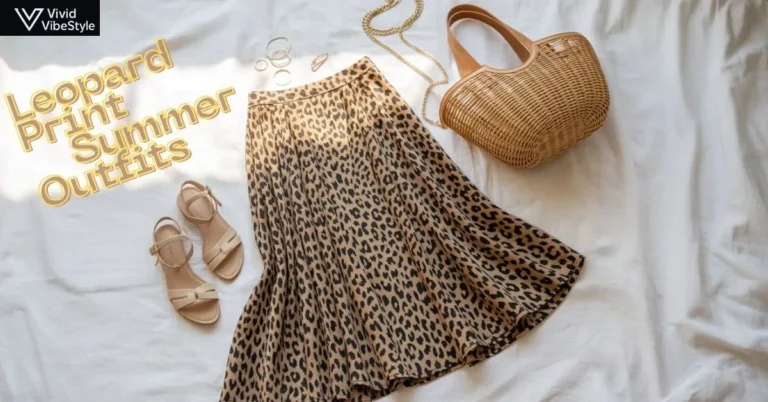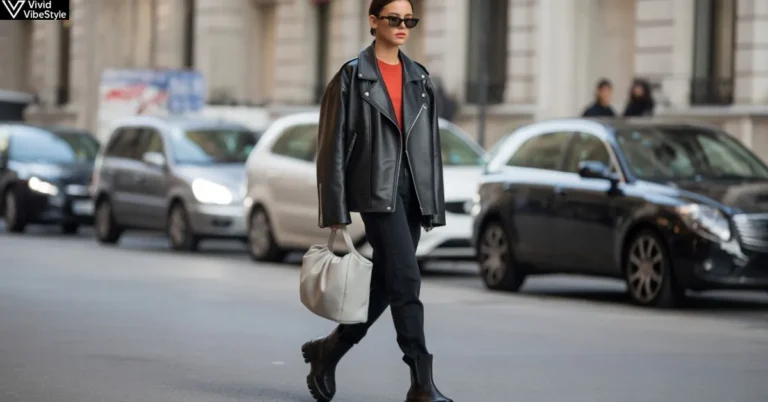Fall Outfits Men: Complete Style Guide for Autumn Fashion Success
You open your closet on a crisp October morning, and nothing feels right. Summer clothes are too light, winter gear is too heavy, and you’re stuck between seasons without a solid fall outfit plan. That men’s fall fashion confusion hits every year temperatures swing wildly, dress codes vary, and you need clothes that actually work for real life. The frustration builds when you see other guys looking put-together in their autumn outfits while you’re layering random pieces that don’t quite click.
This seasonal style struggle wastes time, money, and confidence. You buy clothes that sit unused, miss opportunities to make strong impressions, and start every morning with wardrobe stress. Fall clothing for men shouldn’t be complicated, yet most guys overthink it or underprepare. The disconnect between wanting to look sharp and knowing how to build practical fall outfits for men creates real anxiety.
The solution is simpler than you think. Men’s fall wardrobe success comes from understanding core pieces, mastering layering techniques, and choosing versatile fall clothing that adapts to changing conditions. This guide breaks down everything you need from casual fall outfits men wear on weekends to stylish fall looks for work with actionable advice that fits your actual lifestyle. You’ll learn which pieces matter, how to combine them, and why certain fall fashion trends for men work better than others.
What Makes Fall the Best Season for Men’s Fashion?

Fall fashion for men stands out because the season demands creativity and functionality in equal measure. Unlike summer’s minimal approach or winter’s bulk, autumn style requires thoughtful layering for fall that balances warmth with breathability. The temperature fluctuations 40°F mornings shifting to 65°F afternoons mean your men’s fall outfits need adaptability built in from the start.
The fall color palette offers richer options than any other season. Earth tones for fall burgundy, olive, camel, rust, and navy complement most skin tones and create sophisticated combinations naturally. These seasonal colors for men work together effortlessly, so building a cohesive fall wardrobe for men becomes intuitive rather than forced. You can mix neutral fall colors like gray and tan with bolder autumn hues without clashing.
Texture in fall fashion adds another dimension to your style. Wool, flannel, corduroy, suede, and knit fabrics bring visual interest and tactile quality that lightweight summer materials can’t match. These fall clothing materials signal intentionality in your appearance, showing you understand men’s seasonal style beyond just throwing on whatever’s clean. The layered fall looks possible with varied textures create depth that photographs well and looks expensive regardless of actual price points.
Essential Fall Wardrobe Pieces Every Man Needs
Your core fall wardrobe should start with five must-have fall items that form the foundation of countless outfit combinations for fall. A versatile fall jacket either a field jacket, bomber jacket, or Harrington jacket serves as your primary outer layer for moderate temperatures. These lightweight fall jackets work over everything from henley shirts to Oxford button-downs, making them the most cost-effective piece in your fall clothing essentials.
Denim jackets for fall deserve special attention as the most versatile men’s fall jacket option. A dark wash denim jacket pairs with chinos, dark jeans (following the contrast rule lighter wash jeans with darker jackets), and even dress pants for smart-casual settings. The Canadian tuxedo (denim on denim) works in fall when you use contrasting washes light blue jeans with a dark indigo jacket creates intentional style rather than accidental matching.
Layering shirts for fall specifically flannel shirts, chambray shirts, and thick cotton Henleys function as both standalone tops and mid-layers. A plaid flannel shirt works under a bomber jacket or over a white t-shirt, giving you multiple casual fall outfit ideas from one piece. Button-down shirts in Oxford cloth or brushed cotton bridge casual and formal contexts, essential for business casual fall outfits.
Fall pants for men require more thought than summer shorts. Chinos in fall colors olive, tan, navy, and charcoal offer more warmth than summer cotton while maintaining versatility. Corduroy pants bring texture and nostalgia, working particularly well in rust, brown, and forest green. Dark wash jeans remain the most practical everyday fall pants, pairing with virtually every top and shoe in your closet.
Fall footwear for men shifts from sneakers and boat shoes toward more substantial options. Chelsea boots, chukka boots, desert boots, and leather sneakers handle wet leaves and temperature drops better than summer shoes. Suede boots in tan or gray add sophistication to smart casual fall outfits, while leather boots in brown or black work across all formality levels from casual weekend wear to office-appropriate outfits.
See More : Old Money Summer Outfits: Timeless Elegance for Warm Weather
How Do You Layer Fall Outfits Without Looking Bulky?
Layering for men follows a simple rule: thin base, medium middle, substantial outer. Your base layer a fitted t-shirt, henley, or lightweight button-down should fit close to your body without being tight. Slim fit fall clothes in this layer prevent bunching when you add pieces on top. A crew neck t-shirt in white, gray, or navy works under everything and keeps your silhouette clean.
The middle layer adds warmth and style without adding bulk. Lightweight sweaters for fall merino wool sweaters, cotton crew necks, or quarter-zip pullovers provide insulation while maintaining mobility. Cardigans for men offer versatility since you can wear them open or closed, adjusting warmth throughout the day. Flannel shirts as middle layers work under denim jackets or field jackets, creating textural contrast that looks intentional.
Your outer layer protects against wind and light rain while completing your look. Unstructured blazers, harrington jackets, bomber jackets, and chore coats work for most fall days. Quilted jackets and vest layers add warmth without restricting movement. The key to avoiding bulk in layers is ensuring each piece fits properly oversized outer layers worn over oversized inner layers create sloppiness, not style.
Color coordination in layers matters more than matching exactly. A navy jacket over a gray sweater over a white henley creates depth through tonal variation. Monochromatic fall outfits all shades of brown, gray, or blue look sophisticated when you vary textures. Contrasting layers a tan jacket over a burgundy sweater work when you keep other elements neutral.
What Are the Best Casual Fall Outfits for Men?
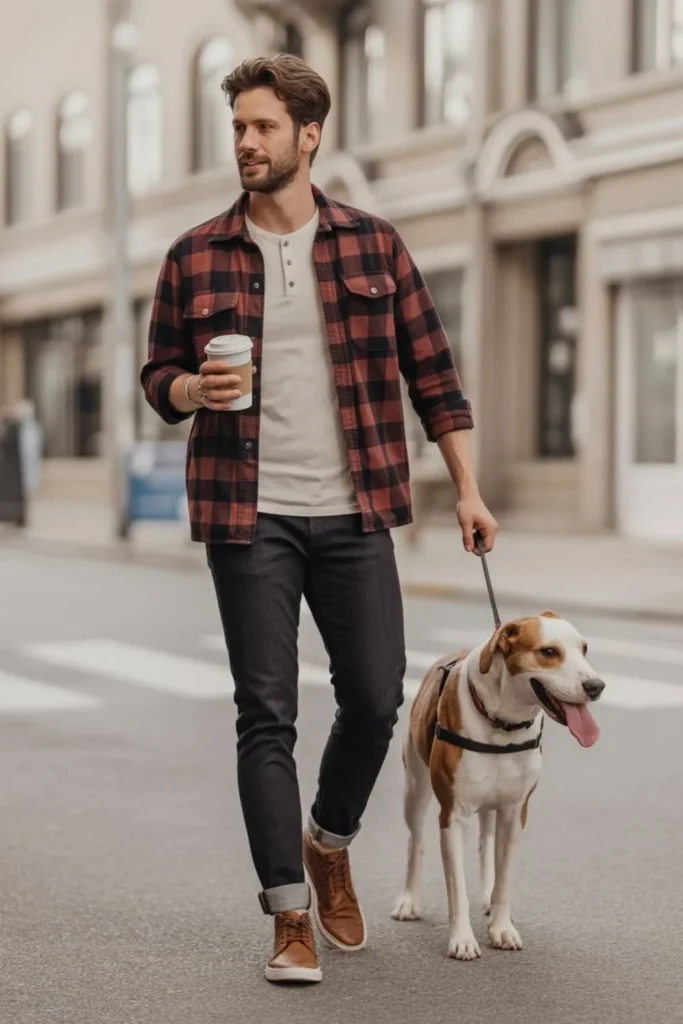
Weekend fall style prioritizes comfort without sacrificing appearance. A henley shirt in charcoal or navy paired with dark jeans and leather sneakers creates an effortless casual fall look that works for errands, coffee meetings, or casual dining. Add a field jacket or bomber jacket in olive or navy when temperatures drop, and you’ve got a go-to fall outfit that requires zero thought.
Flannel shirt outfits remain the quintessential casual autumn look. Wear a red plaid flannel over a white t-shirt with medium wash jeans and chukka boots for a classic rugged fall style. Layer the same flannel under a denim jacket with black jeans and Chelsea boots for a more refined layered casual outfit. The flannel as outerwear versus flannel as layer distinction lets one piece create multiple outfit variations.
Sweater and jeans combinations offer endless casual fall outfit possibilities. A chunky knit sweater in cream or oatmeal paired with dark indigo jeans and suede chukka boots looks expensive regardless of actual cost. Cable knit sweaters, shawl collar cardigans, and waffle knit Henleys each bring different textures to the denim base, keeping your casual fall rotation interesting.
Utility style fall outfits incorporate cargo pants, work jackets, and boots for a more rugged aesthetic. Olive cargo pants with a black henley and tan work boots create a masculine fall look that’s practical for outdoor activities. Corduroy pants in brown or tan with a thick flannel and leather boots blend workwear influence with contemporary style.
See More : Grecian Dresses: The Ultimate Guide to Elegant Goddess-Style Fashion – 2025
How Should Men Dress for Work in Fall?
Business casual fall outfits require balancing professional appearance with seasonal appropriateness. A dress shirt in Oxford cloth blue, white, or light pink paired with chinos in navy or charcoal and leather oxfords or loafers creates a polished foundation. Add a v-neck sweater or cardigan over the dress shirt for warmth and visual interest, and you’ve got a versatile work outfit that adapts to varying office temperatures.
Blazer outfits for fall elevate your office style beyond standard business casual. An unstructured navy blazer over a white Oxford shirt with gray chinos and brown leather shoes works for client meetings and presentations. Textured blazers herringbone, tweed, or flannel bring seasonal relevance while maintaining professional standards. The blazer without tie approach keeps things approachable while signaling competence.
Smart casual fall looks bridge formal and casual contexts, perfect for creative offices or casual Fridays. A chambray shirt with dark chinos and suede Chelsea boots looks intentional without being stuffy. Henleys under blazers, turtlenecks with sport coats, and crew neck sweaters over collared shirts expand your work wardrobe options without requiring major investment.
Layering for the office presents unique challenges since you’re moving between outdoor cold and indoor heating. Choose removable layers cardigans, quarter-zips, lightweight blazers that you can shed without disrupting your entire outfit. Keep a merino wool sweater at your desk for air-conditioned spaces, and wear transitional jackets that work both outside and inside conference rooms.
What Colors Work Best for Fall Outfits?
Fall color theory centers on earth tones that mirror the changing leaves and harvest season. Burgundy, rust, burnt orange, olive green, camel, chocolate brown, and forest green form the core autumn color palette. These warm fall colors complement the golden-hour lighting that dominates the season, making your outfits photograph well and look sophisticated in person.
Neutral fall colors charcoal, navy, tan, and cream provide the foundation for versatile outfit building. A navy sweater works with tan chinos, gray pants, or dark jeans equally well. Charcoal pants pair with virtually any fall color, making them the most cost-effective wardrobe investment. Cream and oatmeal sweaters add lightness to darker fall palettes without feeling summery.
Accent colors for fall mustard, teal, plum, and deep red add personality without overwhelming your look. A mustard beanie or burgundy scarf brings intentional color to an otherwise neutral outfit. Color blocking in fall pairing rust with navy, or olive with burgundy creates visual interest when you’re confident with color. Start with one accent piece and build from there rather than overwhelming yourself with color at once.
Monochromatic fall outfits in shades of brown, gray, or blue look expensive and considered. A light gray henley under a charcoal cardigan with dark gray jeans and black Chelsea boots creates depth through tonal variation. Brown on brown tan chinos, chocolate sweater, camel overcoat feels luxurious when you vary textures and shades. This approach simplifies outfit decisions while elevating your overall aesthetic.
How Do You Style Fall Outfits for Different Body Types?

Tall men benefit from layered looks that add horizontal lines and break up vertical space. Bold patterns wide stripes, large plaids, chunky knits work better on taller frames than small guys. Longer jackets car coats, topcoats, longer field jackets maintain proportion without looking like you’re drowning in fabric. Cuffed jeans and high-top sneakers add visual weight at the bottom, balancing your silhouette.
Shorter men should prioritize vertical lines and fitted silhouettes in their fall outfits. Monochromatic combinations, streamlined layers, and cropped jackets extend your frame visually. Higher-waisted pants create the illusion of longer legs, especially when combined with tucked shirts or shorter outerwear. Avoid oversized layers that swallow your frame fitted sweaters, tailored jackets, and slim-cut pants maintain proportion.
Athletic builds can carry structured layers and heavier fabrics without looking bulky. Rugby shirts, thick crew neck sweaters, and quilted jackets complement broad shoulders and defined chests. Tapered pants chinos or jeans with narrower leg openings balance wider upper bodies. Fitted base layers under slightly relaxed outer layers create intentional shape without looking sloppy.
Heavier men should focus on proper fit and vertical emphasis rather than hiding under oversized clothes. Dark colors in your base and mid-layers create a slimming effect, while lighter jackets add dimension without adding visual weight. V-neck sweaters elongate your torso better than crew necks. Structured blazers and jackets define your shoulders, creating shape rather than shapelessness. Streamlined layers avoiding too many pieces keep your silhouette clean.
See More : Victoria Beckham Outfits: The Ultimate Style Guide to Posh Spice’s Fashion Evolution
What Accessories Complete Fall Outfits for Men?
Fall accessories serve both functional and aesthetic purposes. Watches ground your outfit, with leather strap watches in brown or tan complementing fall color palettes better than metal bracelets. Field watches, dive watches, and dress watches work across different style contexts, from rugged casual to business formal.
Scarves for men add warmth and visual interest without bulk. Wool scarves in neutral colors work with everything in your wardrobe, while patterned scarves plaid, herringbone, striped add personality to simple outfits. The Parisian knot, drape, and reverse drape offer different styling options depending on formality and weather. A camel scarf or charcoal scarf gives you maximum versatility across your fall wardrobe.
Hats for fall beanies, baseball caps, and flat caps protect against cold while completing your look. Beanies work best with casual outfits, adding a relaxed vibe to layered looks. Choose neutral colors like charcoal, navy, or olive for maximum compatibility. Flat caps and newsboy caps add a classic touch to smart casual outfits, particularly when paired with blazers and boots.
Bags for men shift from summer backpacks to more substantial leather bags and canvas messengers. Leather briefcases work for professional settings, canvas totes handle casual contexts, and leather backpacks bridge both worlds. Brown leather ages beautifully and complements fall color schemes better than black. Waxed canvas bags offer weather resistance with a rugged aesthetic perfect for autumn.
Belts and socks matter more in fall since layered outfits expose them frequently. Match your belt to your shoes brown belt with brown shoes, black belt with black shoes. Wool socks and thick cotton socks provide warmth while adding color opportunities burgundy socks, olive socks, patterned socks that peek out from boots or rolled pants. These small details signal attention to your overall appearance.
How Do You Transition Summer Clothes into Fall?
Extending summer wardrobe into fall maximizes your existing clothes while gradually building seasonal pieces. Light jackets over summer t-shirts and shorts work for early September when temperatures remain warm. A denim jacket or bomber jacket transforms a basic t-shirt outfit into an acceptable fall look without requiring new basics.
Layering summer pieces creates entirely new outfits from existing items. That linen shirt that was too hot alone becomes a perfect mid-layer under a sweater or light jacket. Summer chinos in tan or khaki work through October when paired with long-sleeve shirts and boots instead of sneakers. Your white sneakers transition to fall footwear when styled with earth-toned outfits and textured layers.
Adding one fall piece to summer outfits bridges seasons effectively. A flannel shirt over your existing t-shirts and jeans immediately reads as fall style without buying a complete new wardrobe. Boots instead of summer shoes signal seasonal awareness even when wearing lighter tops. A beanie or scarf adds fall vibes to otherwise neutral outfits.
Darker versions of summer staples work better in fall contexts. If you wore light blue chinos and white t-shirts in summer, switch to navy chinos and gray t-shirts for fall. Darker jeans, charcoal pants, and navy sweaters feel more seasonally appropriate than bright colors and light fabrics. This color shift alone makes your summer wardrobe feel more autumnal without major purchases.
What Are Common Fall Fashion Mistakes Men Make?

Over-layering creates bulk and discomfort rather than style. Adding four or five layers because temperatures might drop results in overheating indoors and looking sloppy. Stick to three-layer maximum base, mid, outer and choose appropriate weights for actual conditions rather than worst-case scenarios. Strategic layering beats excessive layering every time.
Ignoring fit remains the biggest style mistake regardless of season. Oversized fall clothes don’t make you look relaxed; they make you look like you don’t know your size. Too-tight layers restrict movement and create unflattering bunching. Each piece should fit your body properly, with base layers slightly fitted, mid-layers relaxed, and outer layers with room for underneath pieces without swimming.
Wearing summer fabrics too late into fall shows poor seasonal awareness. Linen shirts and lightweight cotton t-shirts look out of place in November. Transition to thicker fabrics flannel, wool, corduroy, brushed cotton as temperatures drop. Fabric weight signals whether you understand dressing for the season.
Neglecting footwear undermines otherwise solid fall outfits. Canvas sneakers and boat shoes with fall layers creates visual disconnect. Your shoes should reflect the seasonal shift leather boots, suede chukkas, leather sneakers that handle weather and complement heavier fabrics. Summer shoes belong in storage by mid-October.
Following trends blindly without considering your personal style leads to wasted money and awkward outfits. That trendy piece everyone’s wearing might not fit your lifestyle, body type, or existing wardrobe. Choose classic fall pieces with longevity over fast fashion trends that disappear next season. Timeless style outlasts temporary trends and saves money long-term.
See More : Vacay Outfits: Ultimate Guide to Stylish Looks Anywhere You Go
How Do You Build a Capsule Fall Wardrobe?
A minimalist fall wardrobe contains 20-30 pieces that create 50+ outfit combinations. Start with three pairs of pants dark jeans, gray chinos, navy chinos that form your foundation. Add five tops two long-sleeve Henleys, two button-down shirts, one flannel in neutral colors and earth tones. Include three sweaters crew neck, cardigan, quarter-zip that layer over those tops and work alone.
Outerwear in a capsule wardrobe requires versatility above all. A navy bomber jacket, field jacket in olive, and denim jacket cover most fall weather scenarios and work with your entire wardrobe. One dressier jacket an unstructured blazer or casual sport coat handles smarter occasions. These four jackets rotate through your week without repetition.
Footwear for capsule wardrobes means choosing three pairs that handle all contexts. Brown leather Chelsea boots work casually and formally. White leather sneakers keep things relaxed for weekends. Suede chukka boots in tan or gray bridge casual and smart-casual. These three options pair with every pant and jacket in your capsule, creating consistent style without decision fatigue.
Accessories complete your capsule with minimal additions. One leather watch with interchangeable straps, one neutral scarf, one beanie, and one versatile bag cover your accessory needs. Choose colors that work with everything charcoal, navy, brown rather than statement pieces that limit compatibility. The capsule wardrobe philosophy emphasizes versatility over variety.
What Fall Outfit Trends Are Worth Following in 2025?
Workwear-inspired style continues dominating men’s fall fashion, with chore coats, carpenter pants, and heavy-duty fabrics bringing utilitarian aesthetics to everyday wear. Corduroy and duck canvas appear in everything from jackets to pants, offering texture and durability. This trend works because the pieces are inherently practical, not just fashionable.
Oversized silhouettes in outerwear specifically longer topcoats, roomier blazers, and relaxed-fit jackets create a sophisticated casual look when paired with fitted base layers. The key is intentional oversizing rather than simply wearing the wrong size. Your inner layers should fit properly while your outer layer provides deliberate volume.
Earth tone maximalism using multiple rich fall colors in one outfit rather than playing it safe with neutrals shows confidence when executed properly. A rust sweater over olive pants with brown boots creates depth through complementary colors. This approach requires understanding color theory but pays off in memorable, sophisticated outfits.
Vintage athletic wear track jackets, rugby shirts, retro sneakers brings nostalgia to fall casual style. These pieces add color and pattern to otherwise neutral wardrobes while remaining comfortable and functional. The trend works in fall because heavier athletic fabrics suit the season better than summer’s technical materials.
Texture mixing combining smooth leather with chunky knits, suede with wool, corduroy with denim elevates simple color combinations into interesting outfits. This technique makes affordable clothes look expensive through thoughtful material pairing. Texture becomes your statement rather than relying on bold colors or loud patterns.
How Do You Dress for Fall Weather Extremes?
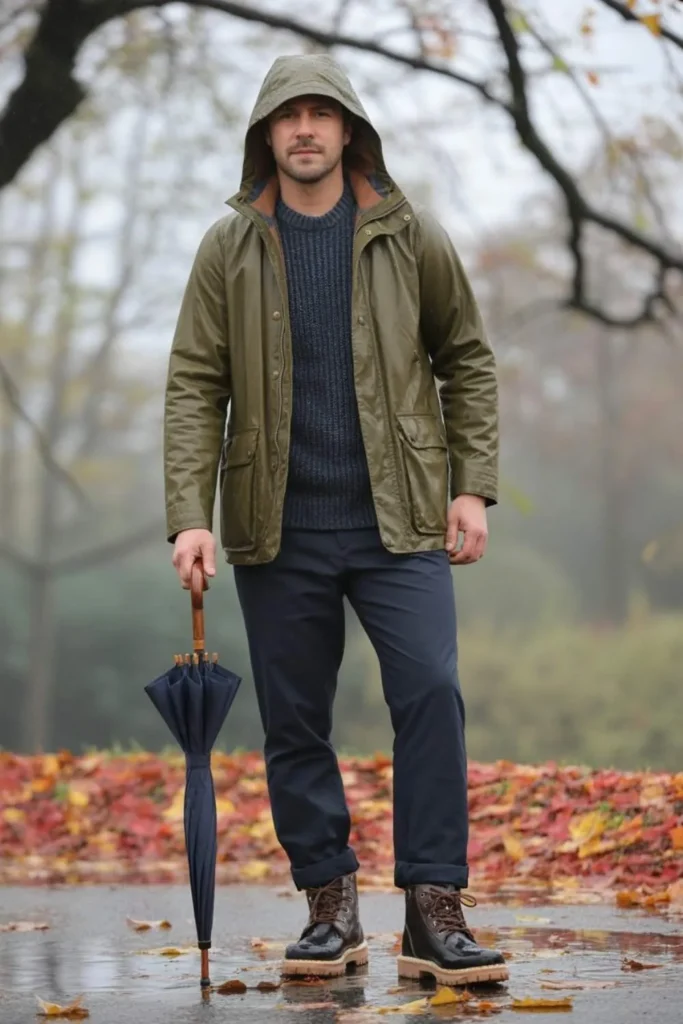
Early fall dressing when September feels like extended summer requires lightweight layers that prepare for evening temperature drops. A long-sleeve henley or thin button-down with light chinos and leather sneakers handles warm afternoons. Keep a cotton bomber jacket or linen-blend blazer nearby for air conditioning and sunset cooling. Rolled sleeves and breathable fabrics prevent overheating while signaling seasonal awareness.
Late fall outfits November approaching winter demand substantial layering and weather-resistant fabrics. Thick wool sweaters over thermal henleys provide core warmth, while quilted jackets, waxed field coats, or wool topcoats protect against wind and rain. Flannel-lined chinos and heavier denim replace lighter summer pants. Waterproof boots and thick wool socks become essential rather than optional.
Rainy fall days require water-resistant outerwear without sacrificing style. Waxed canvas jackets, technical parkas, and treated wool coats handle precipitation while looking intentional. Avoid bulky rain shells that scream “I grabbed whatever” choose stylish water-resistant options that work aesthetically with your outfit underneath. Leather boots with proper care handle wet conditions better than suede.
Unpredictable fall weather 70°F midday dropping to 45°F evening demands removable layers and strategic planning. Wear a henley or t-shirt under a button-down shirt under a lightweight jacket, allowing you to remove layers as needed. Jackets that pack small or tie around your waist provide flexibility. Check forecasts before leaving, but prepare for 10-15 degree swings regardless of predictions.
See More : Classy Jeans Outfit Ideas: 30+ Sophisticated Ways to Style Denim for Any Occasion
Frequently Asked Questions
What should guys wear in fall?
Men should wear layered outfits combining long-sleeve shirts, sweaters, jeans or chinos, boots or leather sneakers, and lightweight jackets. Focus on earth tones like burgundy, olive, navy, and tan while incorporating textures like flannel, corduroy, and wool for visual interest and seasonal appropriateness.
How many fall outfits do I need?
A functional fall wardrobe needs 7-10 complete outfit combinations to rotate through two weeks without repetition. Build this with 15-20 versatile pieces three pants, five tops, three sweaters, two jackets, and appropriate footwear that mix and match for variety without overwhelming your closet.
What colors are best for fall?
The best fall colors include burgundy, rust, olive green, navy, camel, charcoal, and brown. These earth tones complement the season’s natural palette and work well together in various combinations. Neutral bases in gray and navy let you incorporate accent colors without overwhelming your look.
Can you wear shorts in fall?
Shorts work in early September when temperatures remain above 70°F, but transition to pants by late September. If you must wear shorts in fall, pair them with long-sleeve shirts and boots rather than t-shirts and sneakers to signal seasonal awareness and avoid looking disconnected from actual weather.
Are jeans good for fall?
Jeans are perfect for fall because heavier denim provides warmth, durability, and versatility across casual and smart-casual contexts. Choose dark washes in indigo or black that pair with earth-toned tops and work with both sneakers and boots for maximum outfit flexibility throughout the season.
What jackets work best in fall?
The most versatile fall jackets include denim jackets, bomber jackets, field jackets, and Harrington jackets for casual wear, plus unstructured blazers for dressier occasions. Choose medium-weight options that layer over sweaters without bulk and work across the season’s temperature range from 45-65°F.
How do you layer without looking bulky?
Avoid bulk by choosing fitted base layers, medium mid-layers, and appropriately sized outer layers with room for what’s underneath. Stick to three layers maximum, use thinner fabrics like merino wool for warmth without thickness, and ensure each piece fits your body properly rather than simply sizing up for every layer.
What shoes should men wear in fall?
Fall footwear should include leather Chelsea boots, suede chukkas, leather sneakers, and work boots depending on your style and needs. These options handle wet conditions better than canvas sneakers while complementing heavier fabrics and earth-toned outfits that define the season’s aesthetic.
Conclusion
Fall outfits for men succeed when you balance practicality with personal style, choosing versatile pieces that adapt to changing temperatures and varying contexts. The core principles proper fit, strategic layering, seasonal colors, and appropriate fabrics apply whether you’re building a complete fall wardrobe or working with existing clothes.
Men’s fall fashion rewards thoughtfulness over trendiness, with classic pieces in earth tones and quality materials outlasting seasonal fads while serving your actual lifestyle needs.
Your fall style journey starts with assessing what you own, identifying gaps in your wardrobe, and investing in essential pieces that create multiple outfit options. A denim jacket, flannel shirts, dark jeans, chinos, sweaters, and boots form the foundation of countless fall looks from casual weekends to office settings. Master the basics before chasing trends, and you’ll develop a personal style that feels authentic rather than costume-like.
The layering techniques and color combinations covered here give you a framework to experiment within while maintaining cohesion. Fall fashion for men offers more creative possibilities than any other season embrace the textures, colors, and versatility that make autumn the best time for men’s style.

